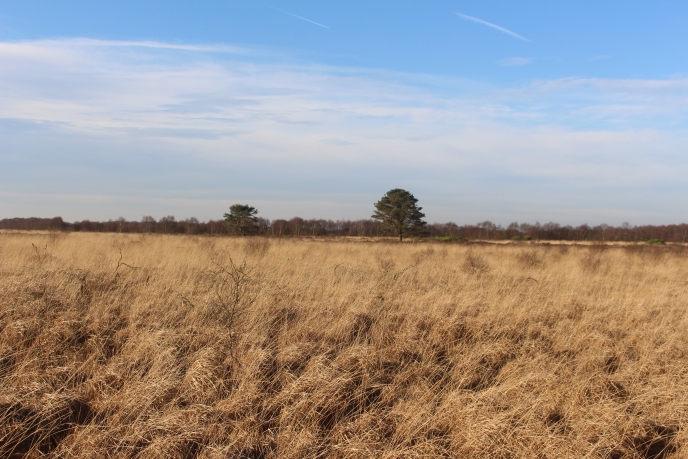Did you know that peat bogs have the ability to capture carbon from the atmosphere and store it away in their soils for millennia? And whilst peatlands only cover three to five per cent of the northern hemisphere’s land mass, they store approximately 33 per cent of global soil carbon.
As carbon and other greenhouse gases are released into the atmosphere, they trigger and increase climate change. Yet, peatlands have the ability to fight back.
In fact, rewetting and restoring just one hectare of peatland is able to soak up the same amount of CO2 as produced by eight car journeys around the world. This makes the often unloved peat bogs that used to dot our region a vital natural resource in the fight against climate change.
These two adjoining areas of lowland raised peat bog near Garstang can be thought of as the jewel in the crown of our region’s peatlands. Historically subjected to draining for shooting and arable use, previous work on the site has succeeded in raising water levels; allowing a fine selection of sphagnum mosses to flourish, which are working to restore the site to its carbon capturing best.
Now, thanks to a grant from the Lancashire Environmental Fund, another phase of regeneration work is underway along the northern edge of the site, aiming to raise the water table and rewet the site further through a series of ground preparation, ditch blocking and bund building works.
work has been begun on Winmarleigh and Cockerham Mosses, two adjoining areas of lowland raised peat bog near Garstang can be thought of as the jewel in the crown of our region’s peatlands. Historically subjected to draining for shooting and arable use, previous work on the site has succeeded in raising water levels; allowing a fine selection of sphagnum mosses to flourish, which are working to restore the site to its carbon capturing best.
Now, thanks to a grant from the Lancashire Environmental Fund, another phase of regeneration work is underway along the northern edge of the site, aiming to raise the water table and rewet the site further through a series of ground preparation, ditch blocking and bund building works.
These measures will also support the already flourishing populations of native bog plants, such as the rare carnivorous sundew, cotton grass and cross-leaved heath, returning the fauna to its natural state. We are also looking forward to an increase in some of the specialised wildlife that lives in peatlands, such as the endangered large heath butterfly. Winmarleigh Moss is one of only three sites in which it can still be found in our region.
The re-wetting works will also help to kick start a complimentary project, which aims to transform an agricultural field that adjoins Winmarleigh Moss into a pioneering carbon farm, believed to be the UK’s first.
The field, on former lowland raised bog which was drained for agriculture in the 1970s, will have water levels raised, and will then be used to grow a permanent cover of sphagnum mosses – specifically with the aim of locking existing carbon in the soils and capturing further carbon from the atmosphere.
The trial is also looking into the benefit of this alternative land use on areas buffering peatland reserves, such as Winmarleigh Moss, both in terms of capturing carbon and improving wildlife sites, as well as regulating water levels within the landscape.
Sarah Johnson, Lancashire Peatlands Initiative Manager, said, “Sphagnum mosses are really special ecosystem engineers. Not only can they soak up more than eight times their own weight in water and play an important role in the creation and continuation of peat bogs, but they can also lock away huge amounts of carbon.”
A species of carbon-capturing sphagnum moss on Winmarleigh Moss in Lancashire
Sphagnum mosses are really special ecosystem engineers
“As it grows, sphagnum moss takes in CO2 and via photosynthesis essentially converts the carbon from this into a carbohydrate which is stored in its cells. All plants will sequester carbon in this way, but what makes sphagnum special is that peat is only formed in very waterlogged acidic conditions, and only very specialised plants – like sphagnum – can thrive in it.”
“Because of those acidic conditions, as the sphagnum moss grows upwards the lower part of the moss decomposes very slowly, creating the peat. This way the carbon in the sphagnum is buried permanently in the peat, rather than being released back into the atmosphere again.”
The Winmarleigh Carbon Farm is part of Care-Peat, an EU-funded project supported by Interreg North West Europe, looking at how peatlands in five countries can be restored and used to store and sequester further carbon from the atmosphere.
Building the carbon farm will involve removing 10cm of the nutrient and seed-enriched top soil (the result of years of fertiliser and lime application) and raising the water table on the farmland by blocking ditches previously dug to drain the land.
A series of ‘cells’ covering approximately two hectares of the field will then be created by building low peat walls known as bunds, and shallow irrigation channels will be dug to control water levels. The cells will then be planted with small plugs of sphagnum mosses (both by hand and also using a repurposed lettuce planter!), with different cells trialling factors such as the influence of nutrients on sphagnum growth and introducing nutrient-stripping plants instead of removing the topsoil.
Manchester Metropolitan University are the UK Knowledge Partners of the project, and will be gathering data on greenhouse gas fluxes and hydrology on the site. The results of the trials will then be used to provide vital research data to inform future land-use policies and potential subsidies to encourage peatland restoration and inform prospective plans for carbon storage internationally.







